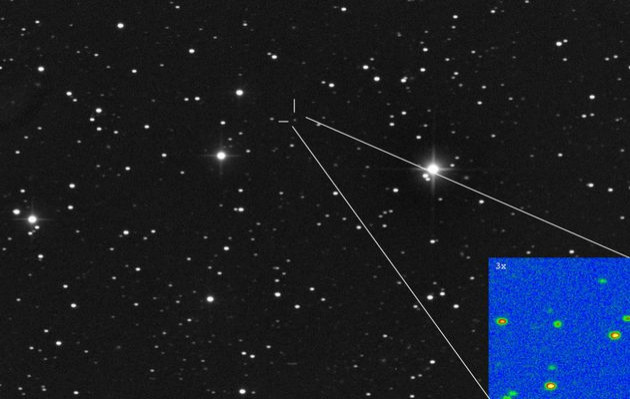Comet Approaching In 2013 Could Outshine The Full Moon

Stargazers next fall may find the moon is not the brightest object in the night sky. As the newly discovered Comet ISON passes close to the sun between October and December next year, it indeed might become bright enough to outshine the moon.
NASA’s Near Earth Object Program recently announced the discovery of Comet ISON, Reuters reported. And a program representative said the giant frozen object will fly extremely close to the sun next fall. Under the right circumstances, a comet of ISON’s size could produce a highly visible trail of ice that will dazzle in the night sky.
Astronomers expect to see Comet ISON reach its closest point to the sun on Nov. 28. At that point, the comet will be roughly 1.2 million miles from the center of the sun.
One of the biggest reasons astronomers are so excited about the arrival of Comet ISON is its projected path. The path of the comet is very similar to that of a 1680 comet that could reportedly be seen even during the light of day, Reuters reported.
Of course, whether Comet ISON merits all the excitement depends on its survival.
As Comet ISON approaches the sun so closely, it could be completely destroyed by the star’s intense heat. Alternatively, it could stay far enough away from the sun that it would not produce a large enough trail of ice particles to put on a spectacular show. If this happens, it could be difficult to make out the comet with the naked eye.
The comet was first noticed by two Russian amateur astronomers using a midsize telescope.
"The object was slow and had a unique movement. But we could not be certain that it was a comet because the scale of our images are quite small and the object was very compact," Artyom Novichonok, one of the comet’s co-discoverers, wrote in a comets email list hosted by Yahoo.
Once Novichonok and co-discover Vitali Nevski came to believe the object could very well be a comet, they traveled to Uzbekistan’s Maidanak Observatory to get a better look at it through a larger telescope, Reuters reported. Other astronomers on the comets email list also did their parts to confirm the comet's identity. Then, organizations such as NASA began to look into the comet, as well.
“Comet ISON could be the brightest comet seen in many generations -- brighter even than the full moon,” British astronomer David Whitehouse told the Independent.
The last comet to illuminate the night sky in a big way was Comet Hale-Bopp in 1997.
© Copyright IBTimes 2024. All rights reserved.






















